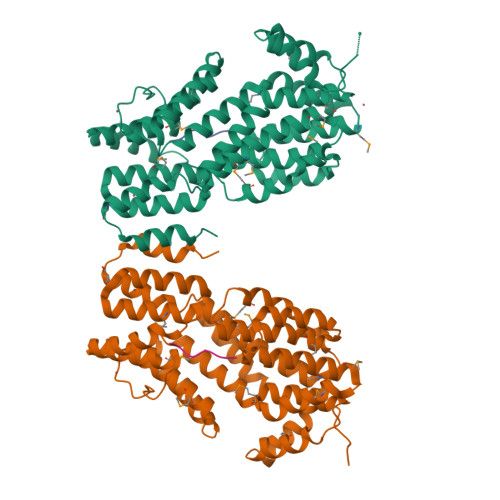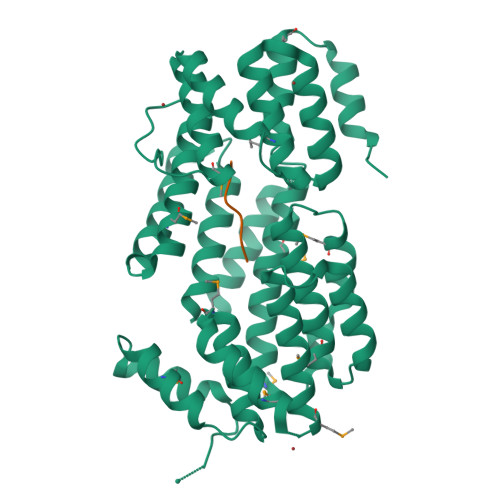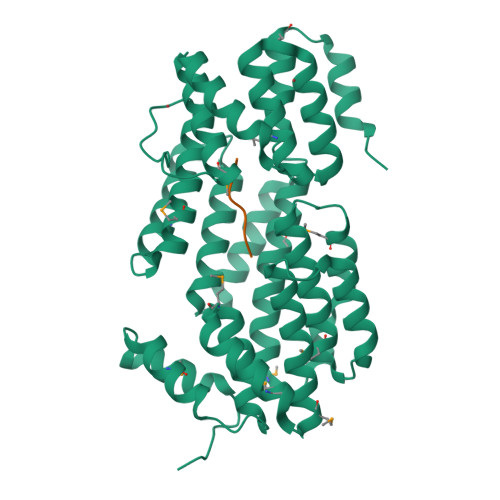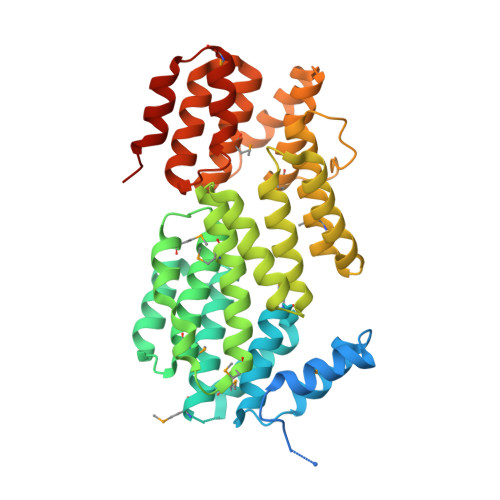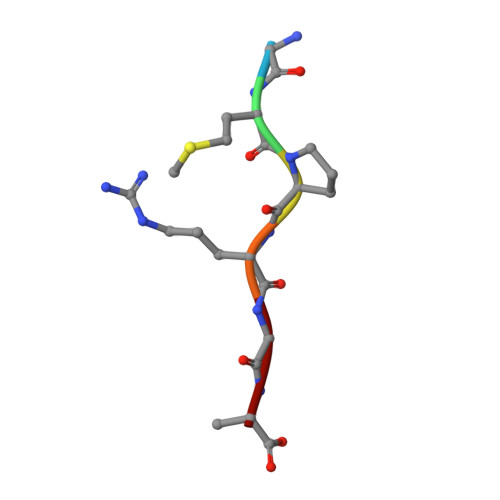Structural basis of the arbitrium peptide-AimR communication system in the phage lysis-lysogeny decision.
Wang, Q., Guan, Z., Pei, K., Wang, J., Liu, Z., Yin, P., Peng, D., Zou, T.(2018) Nat Microbiol 3: 1266-1273
- PubMed: 30224798
- DOI: https://doi.org/10.1038/s41564-018-0239-y
- Primary Citation of Related Structures:
5XYB, 5Y24 - PubMed Abstract:
A bacteriophage can replicate and release virions from a host cell in the lytic cycle or switch to a lysogenic process in which the phage integrates itself into the host genome as a prophage. In Bacillus cells, some types of phages employ the arbitrium communication system, which contains an arbitrium hexapeptide, the cellular receptor AimR and the lysogenic negative regulator AimX. This system controls the decision between the lytic and lysogenic cycles. However, both the mechanism of molecular recognition between the arbitrium peptide and AimR and how downstream gene expression is regulated remain unknown. Here, we report crystal structures for AimR from the SPbeta phage in the apo form and the arbitrium peptide-bound form at 2.20 Å and 1.92 Å, respectively. With or without the peptide, AimR dimerizes through the C-terminal capping helix. AimR assembles a superhelical fold and accommodates the peptide encircled by its tetratricopeptide repeats, which is reminiscent of RRNPP family members from the quorum-sensing system. In the absence of the arbitrium peptide, AimR targets the upstream sequence of the aimX gene; its DNA binding activity is prevented following peptide binding. In summary, our findings provide a structural basis for peptide recognition in the phage lysis-lysogeny decision communication system.
Organizational Affiliation:
National Key Laboratory of Crop Genetic Improvement and National Centre of Plant Gene Research, Huazhong Agricultural University, Wuhan, China.








